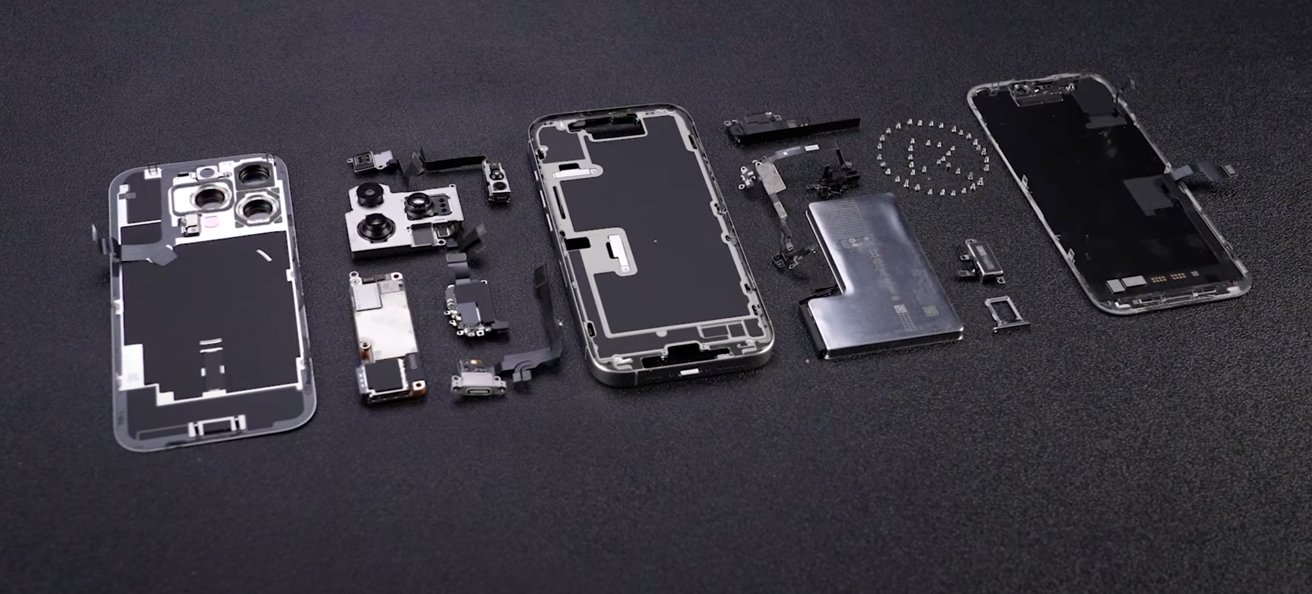iPhone 16 Pro metal-wrapped battery & better cooling confirmed by teardown
A teardown has proven that Apple has used a new metal battery casing in the iPhone 16 Pro, with the model also benefiting from chassis changes that will help thermally manage the device's internals.

The new stainless steel battery in the iPhone 16 Pro [YouTube/Rewa Technology]]
An inevitable part of the iPhone launch is the teardown, and the iPhone 16 generation is no different. Shortly after its release, the iPhone 16 Pro has been taken apart and inspected internally, revealing changes to Apple's design.
The teardown by Rewa Technology posted to YouTube involves a fairly standard disassembly of the iPhone 16 Pro. After heating the rear and separating the glass backing, the engineer had access to the internals as normal.
The first change spotted was the battery, which, just as rumored, has a shiny steel casing which is affixed with adhesive pads. This differs from the previous battery casings, which could help enhance heat dissipation compared to previous generations.
Curiously, the video claims the metal battery enclosure is limited only to the iPhone 16 Pro model.
The TrueDepth camera assembly is similar in construction to the iPhone 15 Pro's version, except it is smaller due to differently arranged cables. The rear camera assembly is larger, in part because of the bigger elements for the telephoto camera.
The motherboard used inside the iPhone 16 Pro is also smaller than its predecessor, with a new and more densely packed arrangement. A protection cover is larger in the new model, which may also help with heat dissipation.

The fully-disassembled iPhone 16 Pro [YouTube/Rewa Technology]
The display is shown to be physically larger than the old model, though also having thinner bezels and a smaller screen frame. The Camera Control button, new to the casing, is a non-removable element laser welded to the chassis.
With all components removed, the new chassis layout is revealed. There's a new graphite-clad aluminum substructure, which again could assist with thermals as well as rigidity.
Read on AppleInsider


Comments
Edit: it's possible that battery heating became an issue with the faster wireless charging. A metal case has significant costs both in terms of weight and cost so it's not something they would have done without a good reason.
https://www.theverge.com/2024/9/22/24251327/iphone-16-teardown-repair-battery-adhesive
https://www.youtube.com/watch?v=M6jBXI6CR9s